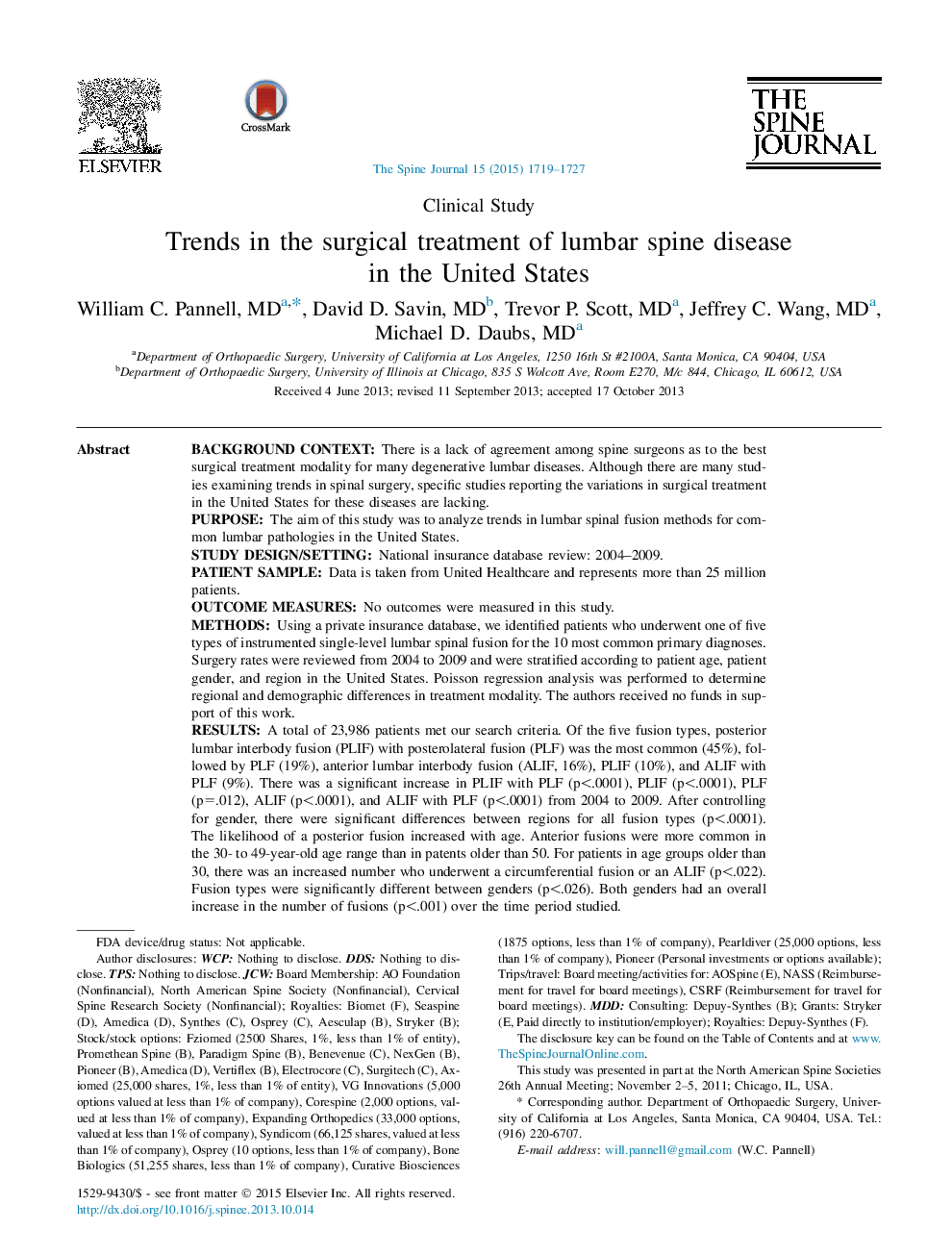| کد مقاله | کد نشریه | سال انتشار | مقاله انگلیسی | نسخه تمام متن |
|---|---|---|---|---|
| 6212448 | 1268580 | 2015 | 9 صفحه PDF | دانلود رایگان |
Background contextThere is a lack of agreement among spine surgeons as to the best surgical treatment modality for many degenerative lumbar diseases. Although there are many studies examining trends in spinal surgery, specific studies reporting the variations in surgical treatment in the United States for these diseases are lacking.PurposeThe aim of this study was to analyze trends in lumbar spinal fusion methods for common lumbar pathologies in the United States.Study design/settingNational insurance database review: 2004-2009.Patient sampleData is taken from United Healthcare and represents more than 25 million patients.Outcome measuresNo outcomes were measured in this study.MethodsUsing a private insurance database, we identified patients who underwent one of five types of instrumented single-level lumbar spinal fusion for the 10 most common primary diagnoses. Surgery rates were reviewed from 2004 to 2009 and were stratified according to patient age, patient gender, and region in the United States. Poisson regression analysis was performed to determine regional and demographic differences in treatment modality. The authors received no funds in support of this work.ResultsA total of 23,986 patients met our search criteria. Of the five fusion types, posterior lumbar interbody fusion (PLIF) with posterolateral fusion (PLF) was the most common (45%), followed by PLF (19%), anterior lumbar interbody fusion (ALIF, 16%), PLIF (10%), and ALIF with PLF (9%). There was a significant increase in PLIF with PLF (p<.0001), PLIF (p<.0001), PLF (p=.012), ALIF (p<.0001), and ALIF with PLF (p<.0001) from 2004 to 2009. After controlling for gender, there were significant differences between regions for all fusion types (p<.0001). The likelihood of a posterior fusion increased with age. Anterior fusions were more common in the 30- to 49-year-old age range than in patents older than 50. For patients in age groups older than 30, there was an increased number who underwent a circumferential fusion or an ALIF (p<.022). Fusion types were significantly different between genders (p<.026). Both genders had an overall increase in the number of fusions (p<.001) over the time period studied.ConclusionsThere are large differences in the United States for surgical treatment methods for lumbar spine pathology. These differences are likely multifactorial, with both patient and surgeon traits playing a role. Illustrating these differences will hopefully lead to outcomes research to determine the indications, efficacy, and appropriateness of these surgical methods, an important step on the path toward standardization of care.
Journal: The Spine Journal - Volume 15, Issue 8, 1 August 2015, Pages 1719-1727
